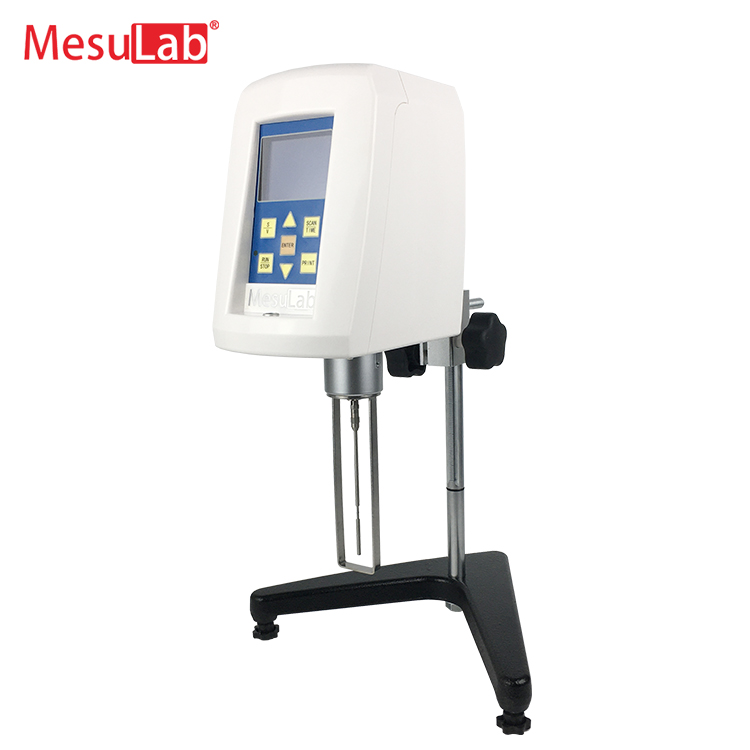Definition of viscosity
Viscosity:
Viscosity is the internal friction of liquid. When the lubricating oil moves relatively under the action of external force, the resistance generated by oil molecules prevents the lubricating oil from flowing smoothly, and its resistance is called viscosity. It is the main technical index of lubricating oil fluidity. Most lubricating oils are classified according to their viscosity, so viscosity is the main basis for oil selection of various mechanical equipment.
The measurement methods of viscosity are divided into two categories: viscosity and relative viscosity. Viscosity is divided into dynamic viscosity and kinematic viscosity; Relative viscosity can be expressed in several ways, such as Engler's viscosity, Seidel's viscosity and Reynold's viscosity.
1, dynamic viscosity η
In the fluid, the resistance generated when the two areas are 1m2, 1m apart and the relative moving speed is 1m/s is called dynamic viscosity. The unit is Pa.s (pa.sec). In the past, the unit of dynamic viscosity was Poise or centipoise, and Poise or centipoise was a non-legal unit of measurement.
1Pa.s=1N.s/m2=10P berth =103cp.
ASTM D445 stipulates that kinematic viscosity is used to calculate dynamic viscosity, that is, η = ρ υ.
Where η-dynamic viscosity, Pa.s
ρ-density, kg/m3
υ-kinematic viscosity, m2/s
China's national standard GB/T506-82 is a method for measuring the dynamic viscosity of lubricating oil at low temperature. This method is used to determine the dynamic viscosity of lubricating oil and dark petroleum products at low temperature (0 ~-60℃). Under the conditions of strictly controlling temperature and different pressures, the time required for a certain volume of sample to flow through a calibrated capillary viscometer is measured, seconds. The dynamic viscosity is calculated by the product of the time the sample flows through the capillary, the capillary calibration constant and the average pressure, and the unit is Pa s. The difference between the two results determined repeatedly by this method should not exceed 5% of its arithmetic mean.
2, kinematic viscosity u
The ratio of dynamic viscosity η of a fluid to density ρ of the fluid at the same temperature is called kinematic viscosity. It is a measure of the flow resistance of this fluid under the action of gravity. In SI, the unit of kinematic viscosity is m2/s. In the past, cSt was usually used as the unit of kinematic viscosity, which was equal to 10-6m2/s (i.e. 1cSt=1mm2/s).
Kinematic viscosity is usually measured by capillary viscometer. Under strict temperature and reproducible driving head, the time for a certain volume of liquid to flow through a calibrated capillary viscometer under the action of gravity is measured. In order to measure the kinematic viscosity accurately, the temperature of the measured fluid must be controlled at first, and the temperature measurement accuracy should reach 0.01℃. Secondly, the appropriate capillary size must be selected to ensure that the outflow time can not be too long or too short, that is, a slightly thicker capillary is used for viscous liquid and a slightly thinner capillary is used for thinner liquid, and the flow time should not be less than 200 seconds; The viscosity tube constant must be calibrated regularly; Moreover, the viscosity tube must be installed vertically. The national standard of kinematic viscosity is GB/T256-88, which is equivalent to ASTM D445-96/IP71/75.
3. Engler viscosity 0E
China's national standard is GB/T266-88, the Engler viscosity determination method for petroleum products.
This is a commonly used relative viscosity in the past, which is defined as the ratio of the time (s) required for 200ml of liquid to flow through the Engel viscometer at a specified temperature to the time (s) required for the same volume of distilled water to flow through the Engel viscometer at 20℃.
4. Redwood viscosity
This viscosity is mainly used in Britain and Japan. It is defined as the time, in seconds, required for 50ml test oil to flow through Reynold viscometer at the specified temperature of 60℃ or 98.9℃.
5. Saybolt Universal Viscosity.
This viscosity unit is commonly used in the United States, and its definition is the time required to flow 60ml of liquid from the Saybolt viscometer at a specified temperature, in seconds. The American standard method is ASTM D88.
6. Conversion of several viscosities
1) Conversion between Engler viscosity and kinematic viscosity
Kinematic viscosity u (mm2/s) = 7.310E-6.31/0E.
2) Conversion between Reynold's viscosity and kinematic viscosity
Kinematic viscosity u (mm2/s) = 0.26R-172/R.
When R>225s, use
u(mm2/s)=0.26R
3) Conversion between Saybolt viscosity and kinematic viscosity:
u(mm2/s)=0.225S
When S>285s, use the above formula.

